#american century
Explore tagged Tumblr posts
Text



Jim Silke
American Century #21
DC/Vertigo
11 notes
·
View notes
Text

The L Train at 14th Street, Richard Estes, 2015
Oil on board 16 x 12 in. (40.64 x 30.48 cm)
#art#painting#richard estes#contemporary art#photorealism#realism#21st century art#21st century#2010s#oil#american#new york#new york city#subway#100 notes#250 notes#500 notes#750 notes#1000 notes#2500 notes#5000 notes#7500 notes
9K notes
·
View notes
Text

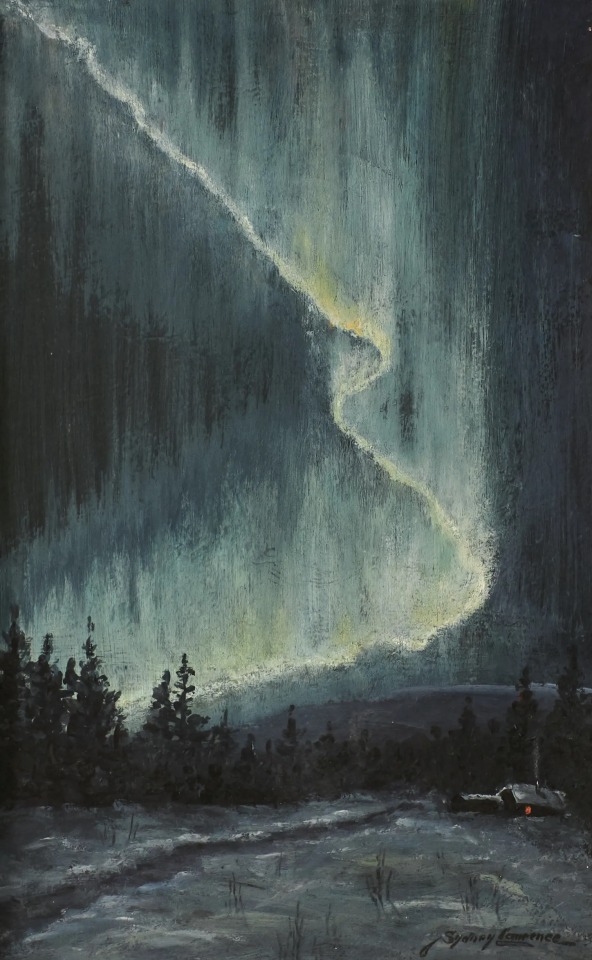

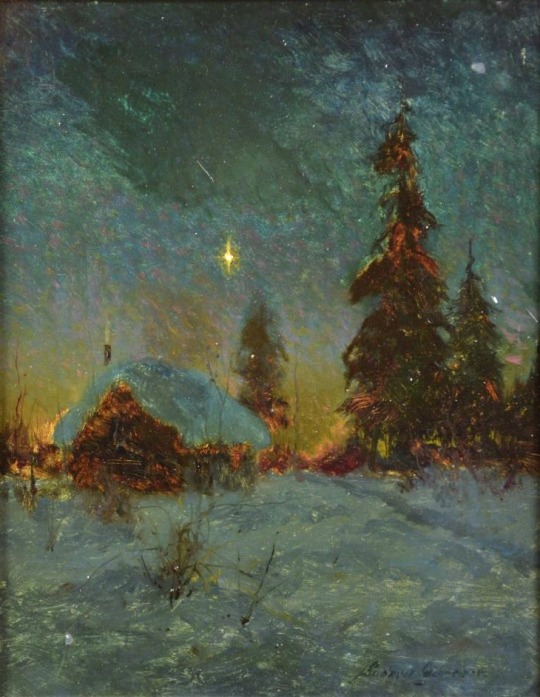
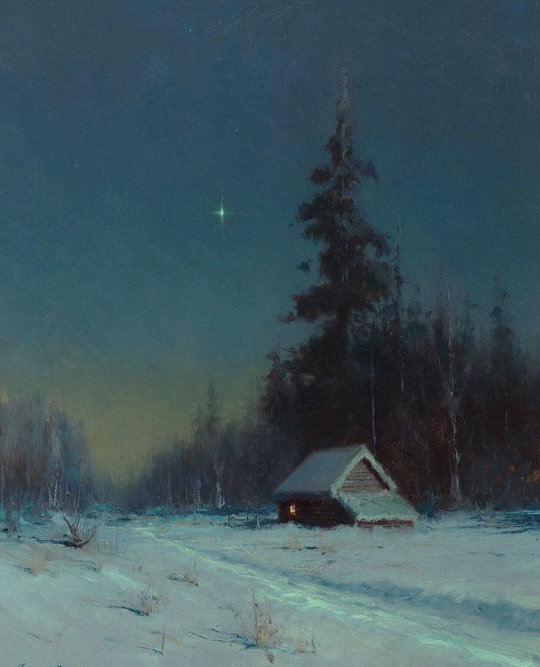
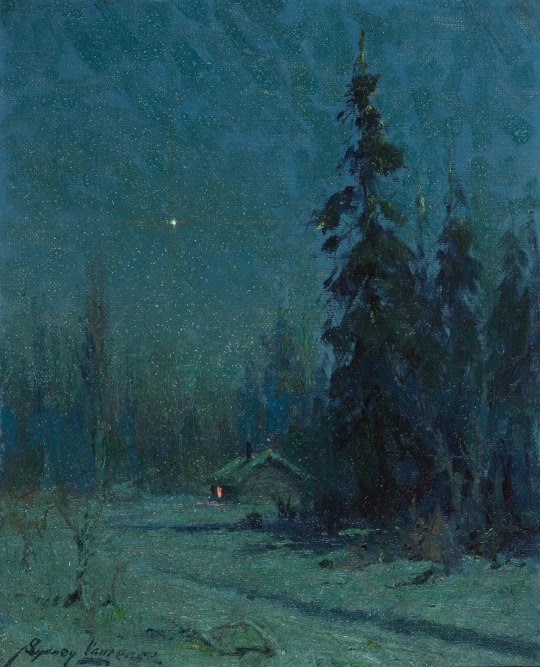
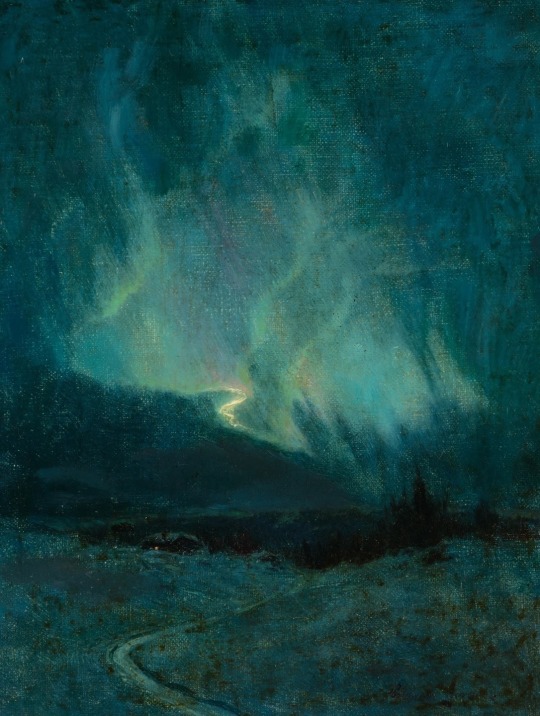
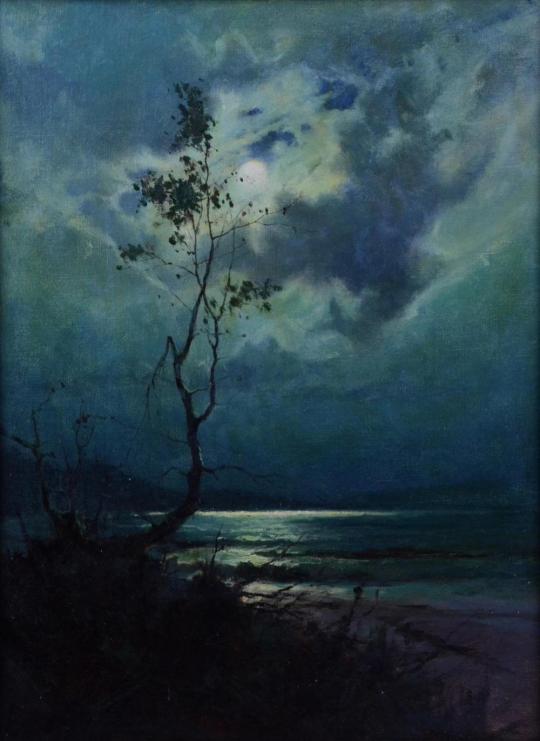
Sydney Mortimer Laurence (American, 1865–1940)
23K notes
·
View notes
Text
On the road leading into the center of Concord, Massachusetts, there sits a house.

It is a plain, colonial-style house, of which there are many along this road. It has sea green and buff paint, a historical plaque, and one of the most multi-layered stories I have ever encountered to showcase that history is continuous, complicated, and most importantly, fragmentary, unless you know where to look.
So, where to start? The plaque.

There's some usual information here: Benjamin Barron built the house in 1716, and years later it was a "witness house" to the start of the American Revolution. And then, something unusual: a note about an enslaved man named John Jack whose epitaph is "world famous."
Where is this epitaph? Right around the corner in the town center.
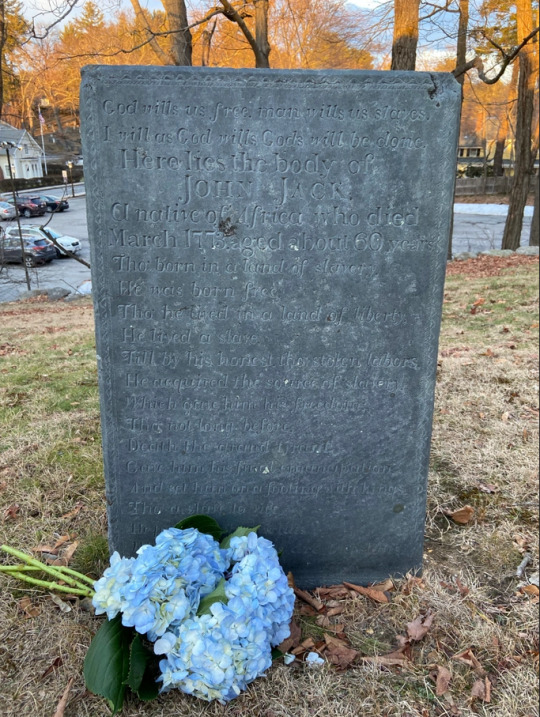
It reads:
God wills us free; man wills us slaves. I will as God wills; God’s will be done. Here lies the body of JOHN JACK a native of Africa who died March 1773 aged about 60 years Tho’ born in a land of slavery, He was born free. Tho’ he lived in a land of liberty, He lived a slave. Till by his honest, tho’ stolen labors, He acquired the source of slavery, Which gave him his freedom; Tho’ not long before Death, the grand tyrant Gave him his final emancipation, And set him on a footing with kings. Tho’ a slave to vice, He practised those virtues Without which kings are but slaves.
We don't know precisely when the man first known only as Jack was purchased by Benjamin Barron. We do know that he, along with an enslaved woman named Violet, were listed in Barron's estate upon his death in 1754. Assuming his gravestone is accurate, at that time Jack would have been about 40 and had apparently learned the shoemaking trade from his enslaver. With his "honest, though stolen labors" he was then able to earn enough money to eventually purchase his freedom from the remaining Barron family and change his name to John, keeping Jack as a last name rather than using his enslaver's.
John Jack died, poor but free, in 1773, just two years before the Revolutionary War started. Presumably as part of setting up his own estate, he became a client of local lawyer Daniel Bliss, brother-in-law to the minister, William Emerson. Bliss and Emerson were in a massive family feud that spilled into the rest of the town, as Bliss was notoriously loyal to the crown, eventually letting British soldiers stay in his home and giving them information about Patriot activities.
Daniel Bliss also had abolitionist leanings. And after hearing John's story, he was angry.
Here was a man who had been kidnapped from his home country, dragged across the ocean, and treated as an animal for decades. Countless others were being brutalized in the same way, in the same town that claimed to love liberty and freedom. Reverend Emerson railed against the British government from the pulpit, and he himself was an enslaver.
It wouldn't do. John Jack deserved so much more. So, when he died, Bliss personally paid for a large gravestone and wrote its epitaph to blast the town's hypocrisy from the top of Burial Hill. When the British soldiers trudged through the cemetery on April 19th, 1775, they were so struck that they wrote the words down and published them in the British newspapers, and that hypocrisy passed around Europe as well. And the stone is still there today.

You know whose stone doesn't survive in the burial ground?
Benjamin Barron's.
Or any of his family that I know of. Which is absolutely astonishing, because this story is about to get even more complicated.
Benjamin Barron was a middle-class shoemaker in a suburb that wouldn't become famous until decades after his death. He lived a simple life only made possible by chattel slavery, and he will never show up in a U.S. history textbook.
But he had a wife, and a family. His widow, Betty Barron, from whom John purchased his freedom, whose name does not appear on her home's plaque or anywhere else in town, does appear either by name or in passing in every single one of those textbooks.
Terrible colonial spelling of all names in their marriage record aside, you may have heard her maiden name before:

Betty Parris was born into a slaveholding family in 1683, in a time when it was fairly common for not only Black, but also Indigenous people to be enslaved. It was also a time of war, religious extremism, and severe paranoia in a pre-scientific frontier. And so it was that at the age of nine, Betty pointed a finger at the Arawak woman enslaved in her Salem home, named Titibe, and accused her of witchcraft.
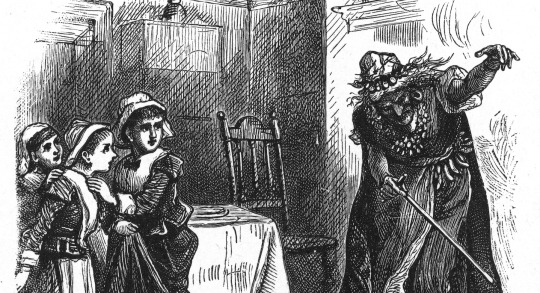
Yes, that Betty Parris.
Her accusations may have started the Salem Witch trials, but unlike her peers, she did not stay in the action for long. As a minor, she was not allowed to testify at court, and as the minister's daughter, she was too high-profile to be allowed near the courtroom circus. Betty's parents sent her to live with relatives during the proceedings, at which point her "bewitchment" was cured, though we're still unsure if she had psychosomatic problems solved by being away from stress, if she stopped because the public stopped listening, or if she stopped because she no longer had adults prompting her.
Following the witch hysteria, the Parrises moved several times as her infamous father struggled to hold down a job and deal with his family's reputation. Eventually they landed in Concord, where Betty met Benjamin and married him at the age of 26, presumably having had no more encounters with Satan in the preceding seventeen years. She lived an undocumented life and died, obscure and forgotten, in 1760, just five years before the Stamp Act crisis plunged America into a revolution, a living bridge between the old world and the new.
I often wonder how much Betty's story followed her throughout her life. People must have talked. Did they whisper in the town square, "Do you know what she did when she was a girl?" Did John Jack hear the stories of how she had previously treated the enslaved people in her life? Did that hasten his desperation to get out? And what of Daniel Bliss; did he know this history as well, seeing the double indignity of it all? Did he stop and think about how much in the world had changed in less than a century since his neighbor was born?
We'll never know.
All that's left is a gravestone, and a house with an insufficient plaque.
7K notes
·
View notes
Text
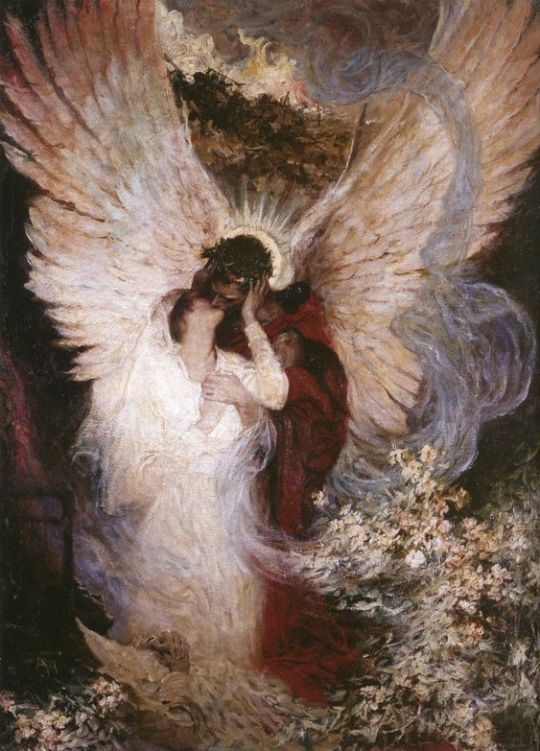
the other side by dean cornwell (1918)
#vintage#art#painting#oil painting#vintage aesthetic#aesthetic#oil on canvas#history#artwork#romantic academia#1900s#fine art#dark academia#canvas#artist#beauty#early 1900s#old art#old paintings#classic art#19th century art#oil on wood#culture#art history#vintage art#history aesthetic#classical art#museum#american art
11K notes
·
View notes
Text

Solar Eclipse, Howard Russell Butler, 1925
#art#art history#Howard Russell Butler#skyscape#astronomy#solar eclipse#American art#20th century art#oil on canvas
8K notes
·
View notes
Text






Joan E. Biren – Eye to Eye: Portraits of Lesbians (1979)
#joan e. biren#photography#american#lesbian#wlw#women#women artists#female artists#lesbian history#XXth century#20th century#female homosexuality#intimacy tag#lesbian artists
15K notes
·
View notes
Text

Grandmother's Love Letters - James Carroll Beckwith
2K notes
·
View notes
Text
Why the 21st Century Will Be Another American Century
Why the 21st Century Will Be Another American Century and why America will defeat China and Russia and why China has caused its own defeat
According to a Pew Research Centre survey conducted in 2022, there has been and continues to be a growing trend among Americans (47% vs. 19%). Roughly a third of U.S. adults (32%) say their nation’s influence on the global stage has stayed about the same. The growing trend and belief that the decline of American power is a cultural and economic issue internal to the United States and other…

View On WordPress
#America History#American Century#Another American Century#China#Decline in Population#Geopolitics#New Cold War#Ukraine War#Vladimir Putin#War in Ukraine
0 notes
Text

Joseph Tomanek (1889-1974) "Fire Dance"
#paintings#art#artwork#mythological painting#girls night#joseph tomanek#fine art#czech american artist#fire#dance#dancing#satyr#halloween#october#female figure#female portrait#portrait of a woman#female nude#1900s#20th century#1k#2k
2K notes
·
View notes
Text



William Trost Richards (American, 1833–1905), "South-West Point, Conanicut" (details), 1878/79
#William Trost Richards#art#american art#painting#landscape#seascape#watercolor#gouache#19th century art#19th century#1870s#paintings#art detail#art history#aesthetic#sea#ocean#waves#water#seagulls
1K notes
·
View notes
Text
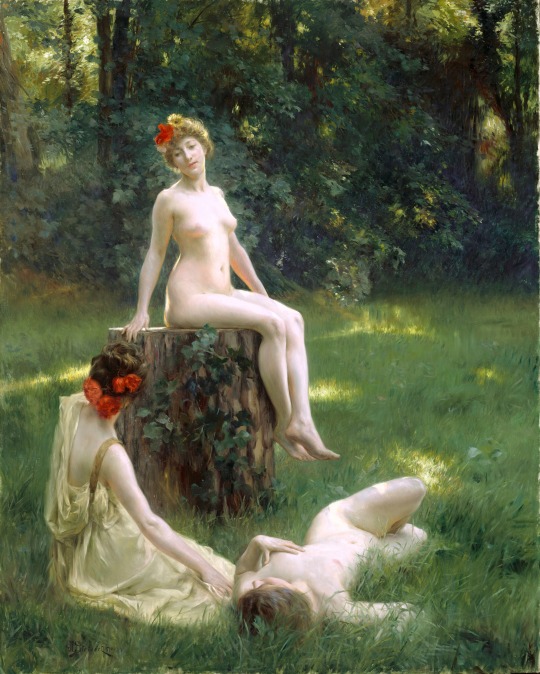
The Glade, 1900 Julius Leblanc Stewart
#Julius Leblanc Stewart#american art#art#painting#art history#belle epoque#edwardian#1900s#early 20th century#nature#idyllic#summer#the girls
2K notes
·
View notes
Text

Summer Plumes, Gustave Cimiotti, circa 1928-29
Oil on canvas 50 ¼ x 40 ⅛ in. (127.7 x 101.9 cm) Smithsonian American Art Museum, Washington, DC, USA
#art#painting#gustave cimiotti#modern art#20th century art#1920s#20th century#summer#landscape#trees#nature#oil#smithsonian american art museum#american#100 notes#250 notes#500 notes#750 notes#1000 notes#2500 notes
4K notes
·
View notes
Text

The Sleuth, c. 1906 by Joseph Christian Leyendecker (American, 1874–1951)
4K notes
·
View notes
Text
A snazzy snail for a slow Sunday: 🐌

John Paul Miller (American, 1918–2013)
Snail Pin, 1956
Gold & enamel, 6.1 x 2.6 cm (2 3/8 x 1 in)
The Cleveland Museum of Art 1956.113.a
#animals in art#20th century art#American art#jewelry#pin#snail#John Paul Miller#gold#metalwork#Cleveland Museum of Art#1950s
2K notes
·
View notes
Text
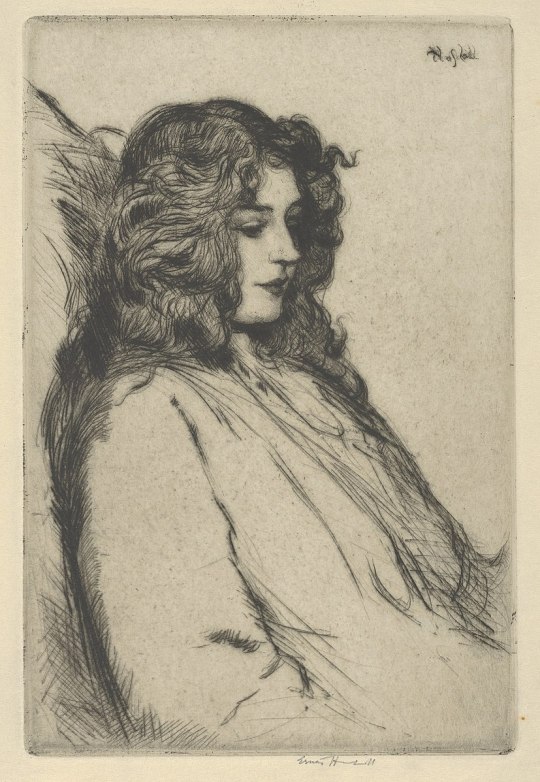
Retrospection, c. 1913
By Ernest Haskell
#art#painting#fine art#classical art#american art#american artist#graphic art#portrait#american painter#female portrait#20th century art#20th century#drawing#print#beauty
3K notes
·
View notes